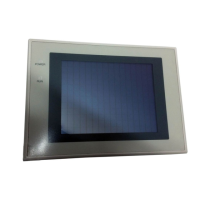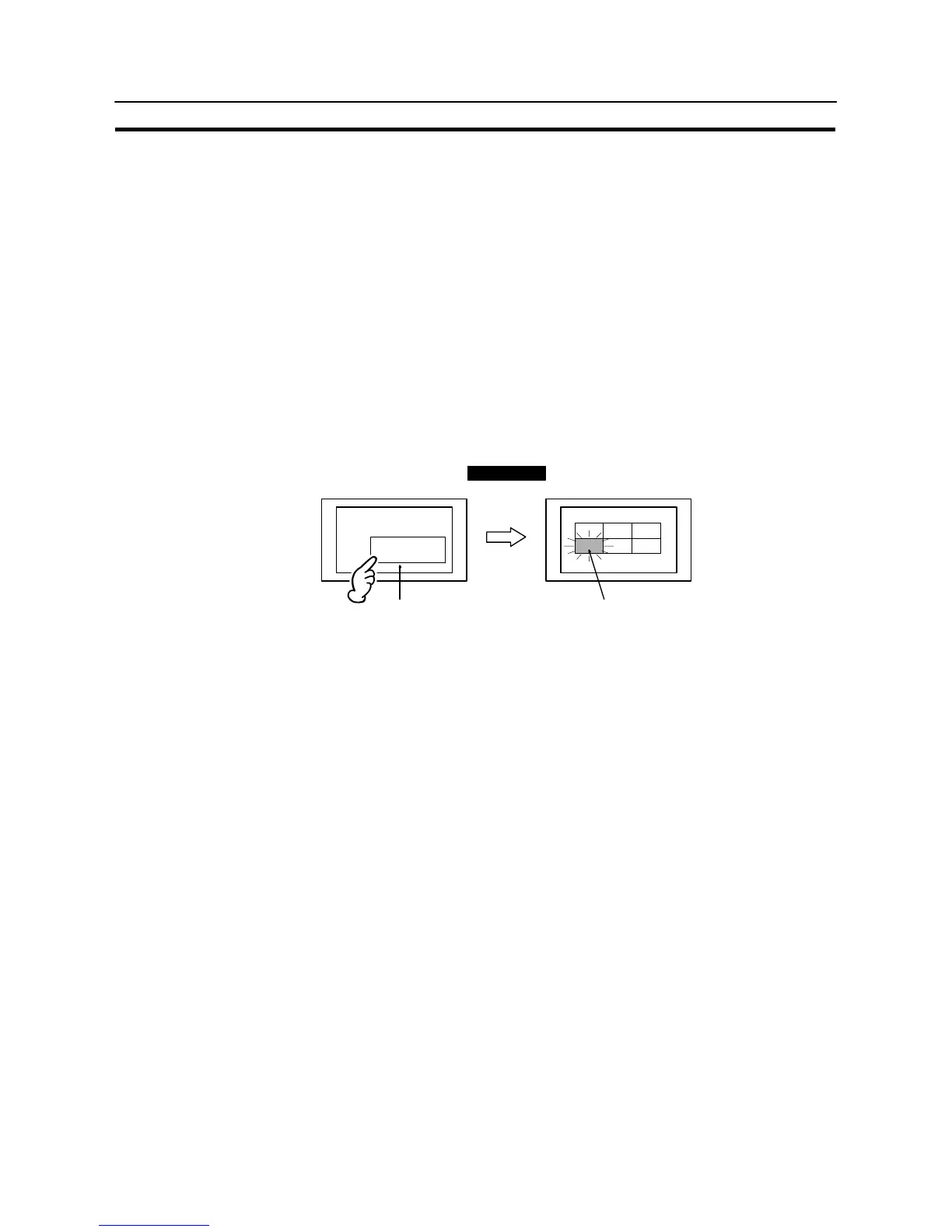603
Examples of Actual Applications of Direct Access
Section 10-1
(3) Make the following settings for any bit memory table.
- PC Address: Number of the PC bit to be monitored
- Function: Switch screen
- Screen No.: Number of the screen set in (1) and (2)
Hints
S In this method, after switching to the error screen, the error screen remains dis-
played even if the status of the monitored PC bit changes back from ON to OFF
(7-3-3 “Bit Memory Tables”, page 295). After checking the error at the equip-
ment, one of the following methods must be used to return to the screen that was
displayed before the error occurred: using a touch switch with the switch screen
function (page 334), writing a screen number to the control area (page 265), or
switching the screen by using a bit memory table (page 295).
Example: Displaying a screen that shows details of the error when the “TEMPERATURE AB-
NORMAL” alarm message is pressed.
192_C 165_C 183_C
TEMPERATURE
ABNORMAL
Alarm list
Error location displayed in red
250_C 180_C 175_C
NT31/NT31C
(1) Set “TEMPERATURE ABNORMAL” as the initial value for any character
string memory table.
(2) Make the following settings for any bit memory table.
- PC Address:
PC bit number to be monitored
- Function:
Alarm
- Switch screen:
Check mark set
- Screen No.:
Number of the screen that displays details of the error (refer to (4))
- String table entry:
Number of the character string memory table for which settings were made
in (1).

